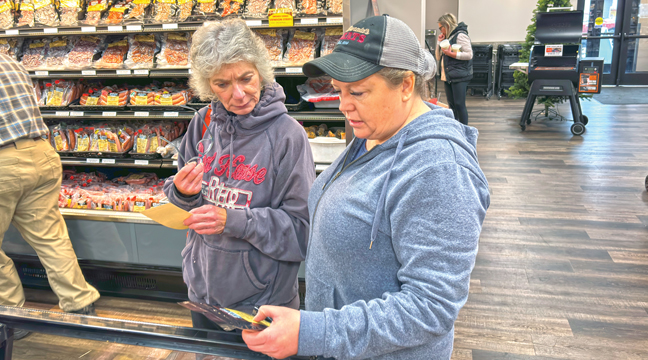A two-hour field tour Saturday led Sand Dunes residents to several locations within the forest, showing the various effects of timber harvests and the DNR’s intended re-use of the forest.
The tour began with a visit to the highly-popular Ann Lake Campgrounds, concluding with a visit to a near clear-cut of Sherburne National Wildlife Refuge acreage abutting the Sand Dunes forest, south of Co. Rd. 4.
What is clear about the situation is that it seems confusing.
The DNR, authored by the state, and the Refuge, a federal entity, have different policies regarding tree harvesting leading to their long term goals.
A key concern for Sand Dunes residents has been the proposed cutting (and in some cases clear cutting) of pines, sold to Northern Minnesota mills.
The cutting of pines in the Ann Lake park, reported the second-most-heavily used campgrounds on state forest land in the state, has been a major concern to residents.
The upshot of their conversations didn’t lead to many conclusions Saturday.
The DNR’s intent with the campgrounds is to keep some of the pine and oak.
But it’s a concern to Bob Quady, retired DNR forester who managed the site, and now member of the local concerned citizens group.
“If they take out the pine and the oak should die, then you have a prairie,” he said. “People will be camping on a prairie.”
Resident Ron Geurts agreed, saying he didn’t want the approximate 40-acre campground site “going to prairie.”
“We’re not addressing all the problems with the trees,” said Quady.
“All these beautiful little trees - white pines - why would you want to take them down?” asked Judy Geurts.
The DNR officials and other officials have advised that elimination of some of the trees would create more diversity in the forest.
“. . . allowing the pine to dominate is not allowing other things . . . “ said Christopher Smith, a biologist with Wildlife Research and Consulting Services.
A DNR official agreed, saying it was “Basic science.” Allowing some of the forest to go would “bring in hundreds of species.”
Therein lies the rub. The DNR wants to re-do the forest; the residents have liked it as it was.
And on a few occasions, they pressed the DNR officials for a response as to how they would be changing their forest management plan for the Sand Dunes.
That plan (to include any new tree harvesting) has been halted for 2016, while this group formulates any changes to the forest management plan. That plan must be put into place before funding for DNR operations can proceed in 2017, Rep. Jim Newberger, Becker, member of their financial oversite committee.
Liz Harper, assistant regional manager with the DNR, asserted “we’re not here to change much. We’re here to give science.”
The tour concluded with a visit to the Refuge’s 2,200-acre parcel nestled between the two Sand Dunes properties.
Tony Hewitt, wildlife biologist for the Refuge, explained a 2014 clear cut of many acres of that space has opened it up to approximate more the oak savanna of their 30,000-acre property north of Co. Rd. 4.
It was previously a pine plantation, he said. They are looking for a 50% oak canopy cover.
The Sand Dunes folk didn’t seem impressed.
“We’d call it a war zone,” one said.
“This is a war zone?” asked a DNR official.
“Call it B.S.,” was the response.
Harper concluded: “We’ve made a commitment to be working with the neighbors.”
Meanwhile, their monthly information sessions with local stakeholders continued with another three hour session Monday at BLHS. It will be reported on next week.









